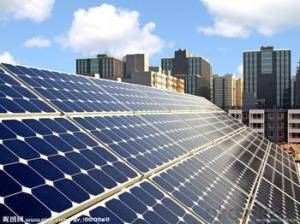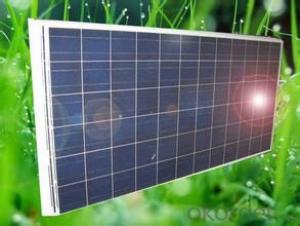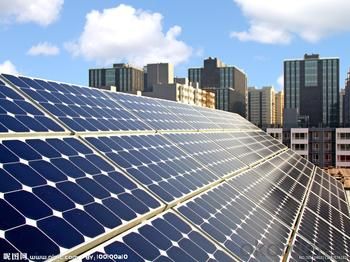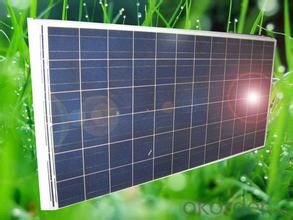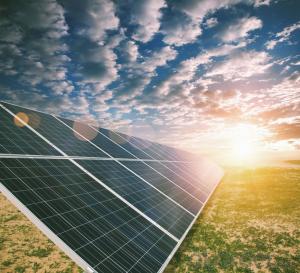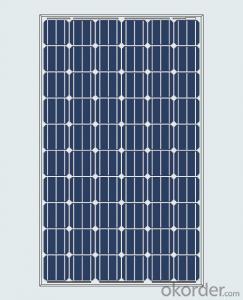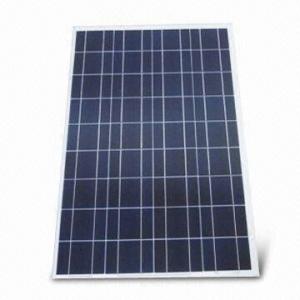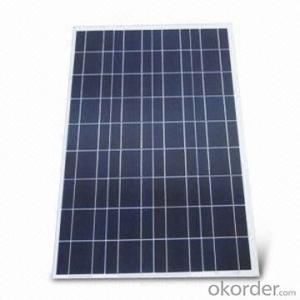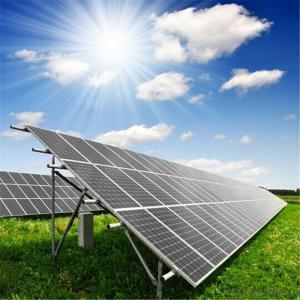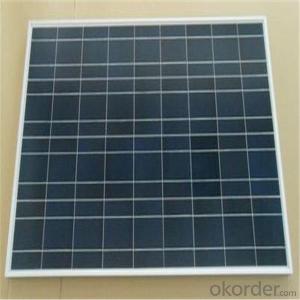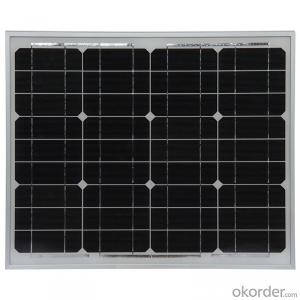Solartech 300w All Black Poly Crystalline Silicon PV Solar Module
- Loading Port:
- China main port
- Payment Terms:
- TT OR LC
- Min Order Qty:
- 1 pc
- Supply Capability:
- 100000000 pc/month
OKorder Service Pledge
OKorder Financial Service
You Might Also Like
Quick Details
| Place of Origin: | Guangdong China (Mainland) | Brand Name: | HUAYU | Model Number: | HYS-120WM36V |
| Material: | Monocrystalline Silicon | Size: | 1196*669*35mm | Number of Cells: | 72 |
| Max. Power: | 120W | Certification: | ISO/CE/TUV/UL | Application: | Home |
| Warranty: | 20 years limited warranty on power | Solar Cell: | A-grade,high efficiency | Frame: | Aluminium Alloy |
| Glass: | Toughened Glass | EVA: | Highly Adhesive | Backsheet: | TPT/TPE(Block Humidity and Oxy Effectively ) |
| Specification: | Normal |
Packaging & Delivery
| Packaging Detail: | wood case and pallet |
| Delivery Detail: | 10 days |
Specifications
solar module 100wp
High Quality Monocrystalline solar Panel 120W/36V,also provide solar power system
The Best New photovoltaic solar Panels mono , solar system,120W/36V, solar photovoltaic ,solar system,iso certified companies
Principle of solar system
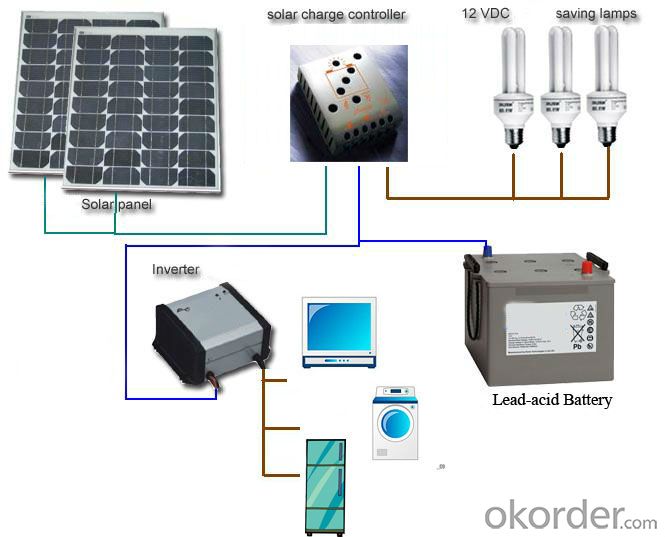
A grade high efficiency solar cells.
15 years limited warranty on material and workmanship
20 years limited warranty onpower
Characteristics
Modules: HYS120WM-36V
Cell: Monocrystalline solar cells (156*61mm)
NO. of cell: 72(4*18)
Maximum power at STC(Pm): 120W
Open circuit voltage(Voc): 42.48V
Optimum operating voltage(Vmp): 35.2V
Short circuit current(Isc): 3.77A
Optimum operating current(Imp): 3.40A
Dimension of module: 1196*669*35mm
Weight: 10kg
Certificate: ISO/CE/TUV/UL
STC:Irradiance 1000W/m2 ,Module temperature 25°C,AM=1.5 Blueprint of the module
Limits
Operating temperature: (-40 to +85°C)
Maximum System voltage: 1000VDC
Temperature and Coefficients
NOCT: (48±2)°C
Current temperature coefficients: (0.06±0.01)%/K
Voltage temperature coefficients: (-155±10)mV/K
Voltage temperature coefficients: (-0.5±0.05)%/K
NOCT:Nominal operation Temperature
Performance Warranty
15 years limited warranty on material and workmanship
20 years limited warranty on power output
Output
Type of terminal: Junction box
Cable: LAPP(4.0mm2)
Asymmetrical lengths: 900mm
The publication summarises warranty and specifications which are subject to change without notice.
- Q: I need to power a series of meraki wireless repeaters that plug into a standerd wall outlet. consuming 5v or .08 amps However I need this in a remote location (like out in the middle of nowhere) Using A solar panel as power supply and a battery to store the energy but, how and what do I use to convert the energy coming from the solar panel to the battery and the batteries power supply to match the needs of the meraki wireless repeater? How do I make this as compact as possible? Do I need a ac/dc converter? or dc/ac converter? Any suggestions or solutions would be great !
- First things first. 5 Volts @ .08 amps would be .2 Watts. therefore you would need at least the same amount from a solar panel to replenish the batteries. But what puzzles me is the notion that plugging it in a wall outlet ? If you use 20 V @ 0.08 then the power consumption is 9.6 Watts And what is a meraki wireless repeater? I never heard of one. I'm a FCC licensed Ham and have some idea what is available. If you need 5 volts DC, you could use twelve Ni-cads in series and just keep them trickle charged with the solar panel That would make it compact. If you were to use an automotive battery (or motorcycle), then you would need a DC/DC converter.
- Q: What is the principle and structure of solar panels?
- inverter: solar direct output are generally 12VDC, 24VDC, 48VDC. In order to provide power to 220VAC appliances, it is necessary to convert the DC power from the solar power system into AC power, so it is necessary to use DC-AC inverter.
- Q: This is the cenario. Your yearly energy use comes by mail and it states that the total amount of energy used your household is 7000kWh.Then you make the decision of switching to get solar panels. The question is what area should your solar panel be given that the average annual length of daylight is 2.0.
- It is not that simple. There are 3 main types of solar cells. Monocrystalline silicon is the most efficient and produces the smallest solar cells, and therefore the smallest panels. Poly-crystalline (or multi-crystalline) silicon produces the next most efficient type of cells and are a popular choice. Amorphous (or thin-film) silicon uses the least amount of silicon and also produces the least efficient solar cells. This means thin film system take up more area than the other two; an important factor to consider in relation to possible future upgrades; i.e. if you'll have enough space left to do so. The North (in the Southern hemisphere) or South (in the Northern hemisphere) facing roof collects the most energy. So this biases the roof area required. Your energy usage can be changed. Hot water (a major energy user) could be better using direct solar heating with peak demand boosting, either from mains or solar. There are other possibilities, either to reduce demand or to provide energy from other sources. Not all sunshine hours are equal. Hours around midday are far more productive than hours later in the day. This must be factored in.
- Q: Can solar panels be installed on hospitals or healthcare facilities?
- Yes, solar panels can be installed on hospitals or healthcare facilities. In fact, many healthcare facilities are increasingly adopting solar energy as a sustainable and cost-effective solution. Solar panels can help hospitals reduce their dependence on traditional energy sources, lower operating costs, and contribute to a greener environment.
- Q: I want to build solar panels for my house.Dose anyone try okorder is this really work?
- |Its okorder /
- Q: if so, would it be possible to make (or remake) an organism that could subsist off of sunlight and external heat like plants?
- There are, in fact, protozoa that use chlorophyll to harvest sunlight, but the thing is, they also MOVE. So it's not entirely unreasonable that an animal cell could do the same.
- Q: I'm curious, for those who have had solar panels installed on the rooves of their houses:How much did you pay? How much energy do the panels produce? Did it dramatically cut down on your electricity bill? Was it worth it? Thanks!
- No, but if you have the money, go for it. In Germany, people get a government rebate (much like the Prius rebate our own government offered) and so you see solar panels everywhere. If the Obama administration pushes for a rebate for solar panels, you will see them here in the state. It's the initial cost that puts off most potential solar panel customers. Upkeep isn't too expensive, and they ultimatley pay for themselves. (after about a decade)
- Q: How do solar panels affect home insurance rates?
- Solar panels can potentially have a positive impact on home insurance rates. While the initial cost of installation may increase the overall value of a home, insurance companies often offer discounts or special policies for homes equipped with solar panels due to their reduced reliance on traditional energy sources and increased energy efficiency. However, it is recommended to consult with insurance providers to determine the specific impact on rates as it may vary depending on the location, type of system, and other factors.
- Q: I am looking at a need of roughly 30w/hour need per 24 hour period. I have spent several hours now looking for information online and have found plenty of info regarding the panels themselves, but information regarding the batteries backups have been slim. I understand that there is a 5-7 hour peak time to collect the energy. I am looking for information regarding the batteries themselves. How do the batteries work, what size batteries should I look for, and what is the life expectency for the batteries? Any website links would also be appreciated!
- First, you didn't say the voltage. Second, 30 W/hour per day. Third, battery backup capacity in Ah = Ampere hour. For 2 Volt DC here's the calculations : 30 w/hour means = 0.83 or rounded Ampere hour. You know peak time 5-7 hour (let say 6 hour)charging time (collect the sun energy). Ampere hour per day (24 hour), with 20 Ah Battery backup is OK. And the Solar Panel is 3 Ampere charging capacity minimal = 3 Amp x 6 hour = 8 Amp hour.
- Q: Can solar panels be installed on a military base?
- Yes, solar panels can be installed on a military base. In fact, many military bases around the world have already implemented solar energy systems as part of their efforts to reduce dependence on fossil fuels and increase sustainability. Solar panels can be installed on rooftops, parking lots, or open grounds of military bases to generate clean renewable energy.
Send your message to us
Solartech 300w All Black Poly Crystalline Silicon PV Solar Module
- Loading Port:
- China main port
- Payment Terms:
- TT OR LC
- Min Order Qty:
- 1 pc
- Supply Capability:
- 100000000 pc/month
OKorder Service Pledge
OKorder Financial Service
Similar products
Hot products
Hot Searches
Related keywords
